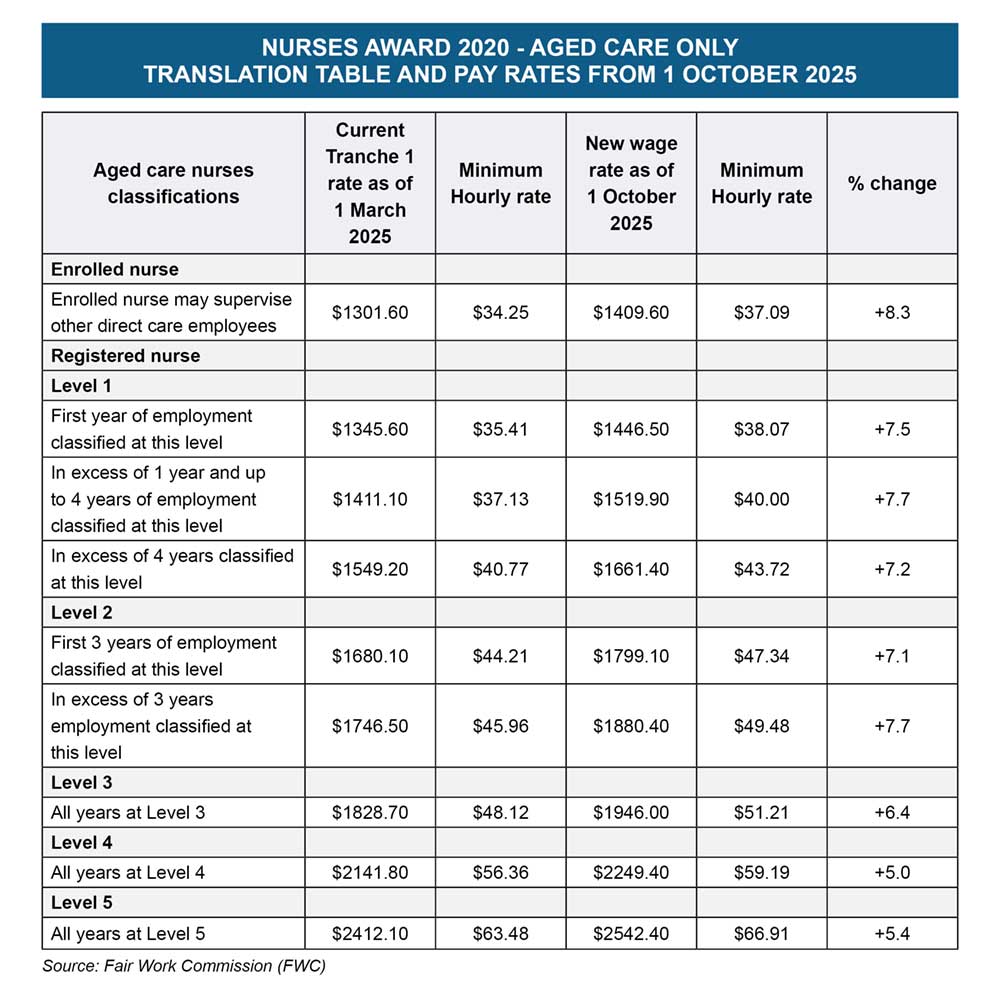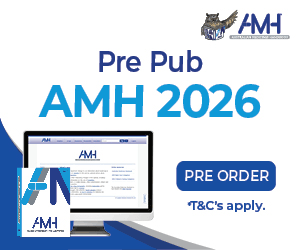If you are a direct care worker or nurse working in aged care, you may notice an extra dollar or so has been added to your hourly rate of pay. While the small increase may not seem like much, it all adds up, and helps with cost-of-living pressures.
Why did my pay increase?
The short answer is that on 1 October 2025, the Nurses Award, Aged Care Award and the award that covers workers delivering aged care in the home, (SCHADS Award), were varied to increase the minimum wages for many aged care workers. Employers must pay award wages – a failure to pay the minimum can expose employers to fines and penalties. This is the direct result of the landmark Work Value case run by the ANMF and other unions. So, your wage will go up, because of the changes to the awards, and additional government funding to boost your wage.
But I know I earn more than award wages, and I’ve also noticed my hourly rate has increased – why is that?
This is good news – the Commonwealth Government agreed to fund wage increases for all workers in aged care, so that everyone’s wages would go up by the award dollar amount – it’s important to recognise the hard work done by aged care workers, to help retain qualified and skilled workers.
I thought my employer just decided to top up my wages a bit, is that what happened?
No, not really. Your employer must pass on additional funding provided by the Government to reflect the 1 October award increase. This requirement came about as a result of the ANMF and other unions ensuring that providers have clear guidance about how additional wages funding must be spent. If your employer fails to pass on the 1 October wage increase, please contact your state or territory union branch organiser.
Ok, that’s great. But I’m still curious. I know wages go up because of the annual wage review, or when the ANMF negotiates a new enterprise agreement, but what’s special about 1 October?
It’s because the ANMF, together with the Health Services Union ran what’s called a Work Value Case at the Fair Work Commission. The case started back in 2020-21 with applications to increase award wages for AINs, PCWs, ENs, RNs, and NPs, together with all other workers in aged care, on the basis that award wages at the time did not reflect the value of the work done. October 1 was the date decided by the Commission for the next work value pay rise to come into effect, which is separate and in addition to the annual wage review, or your enterprise agreement pay rates.

How did you prove wage rates were too low?
There were lots of steps to do this. The ANMF looked at the history of wage setting for nurses. Time and again, that history showed that work was undervalued because it was done by women and characterised as less valuable because it was perceived as care work, not requiring the same skill levels as more traditional male dominated work.
That’s outrageous!
Yes, that’s why the ANMF commissioned a special report that analysed every aspect of care work and identified all the skills needed to do the work – such as sequencing, anticipating needs, looking for underlying issues and working in a fast paced and unpredictable environment. The resulting ‘Spotlight’ report really shone a light on all the invisible skills involved in care work. The report was very helpful in assisting the FWC to decide that award rates needed to be increased.
Was there anything else?
Yes, the ANMF called on aged care members to provide evidence about the sort of work they do every day and how that work has changed over time. Members described how it’s become more complex and requires ever greater skill levels and responsibility to deliver quality care to older people. The FWC agreed with members, and this contributed to the decision to increase wages by more than 30% for many nurses.
The increase you see on 1 October is one of several – the first increase was in July 2023 and the last one for nurses will be passed on in August 2026.
It’s taken a while, then?
For sure, and your union has been with you every step of the way. Make sure to get in touch with your branch if you have any more questions.
More information on the ANMF’s Work Value Case here









One Response
No pay rise for my in private aged care just got my pay slip still on the same rate